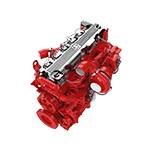Nov . 12, 2024 10:44 Back to list
brake drum gear coupling
Understanding Brake Drum Gear Couplings
Couplings play a vital role in various mechanical systems, particularly in the context of power transmission. Among the different types of couplings, the brake drum gear coupling stands out due to its unique design and functionality. This article explores the fundamental principles, applications, advantages, and maintenance aspects of brake drum gear couplings.
What is a Brake Drum Gear Coupling?
A brake drum gear coupling is a mechanical device used to connect two shafts within a drive system. It combines the functionality of a brake drum with that of a gear coupling, providing both rotational torque transmission and braking capabilities. Typically made from durable materials like steel or cast iron, this coupling is engineered to withstand high stresses and offer reliable performance in various operating conditions.
How Does It Work?
The operation of a brake drum gear coupling is straightforward. It consists of two halves that are connected to the output and input shafts, respectively. These halves are equipped with internal gears that mesh with external gears mounted on the shafts. When torque is applied, the gears engage, allowing for the transfer of rotational motion. Simultaneously, the brake drum surrounds the gears, enabling braking when necessary.
The braking mechanism can be activated using hydraulic or pneumatic pressure, which allows for efficient slowing or stopping of machinery without causing excessive wear on the shafts or gears. This dual functionality makes the brake drum gear coupling particularly valuable in applications requiring both power transmission and braking.
Applications
Brake drum gear couplings are widely used in various industries, including
1. Manufacturing In assembly lines and conveyor systems where precise torque control is essential. 2. Mining For driving heavy machinery and equipment where high torque is required, along with the need for effective stopping mechanisms. 3. Construction In cranes and other heavy lifting equipment, brake drum gear couplings provide the necessary strength and reliability. 4. Marine Used in ship propulsion systems to connect the engines to propellers, ensuring both power transfer and braking.
brake drum gear coupling

Due to their robust design, these couplings can withstand harsh environmental conditions, making them ideal for heavy-duty applications.
Advantages
The brake drum gear coupling offers several benefits
- Efficient Torque Transmission Its gear mechanism ensures that torque is efficiently transferred from one shaft to another, promoting optimal operation. - Braking Capability The integrated brake function allows for effective stopping power without requiring additional braking systems. - Durability Made from high-quality materials, these couplings are designed to handle significant stress and resist wear and tear. - Easy Maintenance Brake drum gear couplings are generally easy to maintain, with straightforward inspection and repair protocols.
Maintenance Considerations
To ensure the longevity and efficient operation of brake drum gear couplings, regular maintenance is essential. Here are some best practices
- Regular Inspections Routine checks for wear, corrosion, and alignment issues can prevent potential failures. - Lubrication Proper lubrication of the gears and brake components is crucial to minimize friction and wear. - Alignment Checks Ensuring that the shafts are correctly aligned can prolong the life of the coupling and reduce stress. - Replacement of Worn Parts Components that show signs of wear should be replaced promptly to avoid compromising performance.
Conclusion
Brake drum gear couplings are invaluable components in various mechanical systems, providing both torque transmission and braking capabilities. Their robust design, efficient operation, and adaptability to different environments make them a preferred choice in many industries. By understanding their function and maintaining them effectively, businesses can ensure the reliability and performance of their machinery, ultimately contributing to enhanced productivity and safety.
-
HINO Industrial Solutions - ¡Ң���ຽ��е��������˾ | Advanced Efficiency&Customization
NewsJul.13,2025
-
HINO Industrial Efficiency Solutions - ¡Ң���ຽ��е��������˾
NewsJul.13,2025
-
HINO Industrial Solutions - ¡Ң���ຽ��е��������˾ | Advanced Technology&Reliability
NewsJul.13,2025
-
HINO Industrial Efficiency-Jiangsu Hino Industrial|Productivity Optimization&Cost Reduction
NewsJul.12,2025
-
HINO-¡Ң���ຽ��е��������˾|Advanced Industrial Solutions&Energy Efficiency
NewsJul.12,2025
-
Premium Brake Drum Iveco – Durable Drum Brake Drum & Brake Shoe Solutions
NewsJul.08,2025
